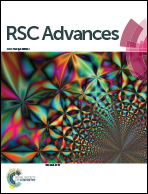In situ enzymatic formation of supramolecular nanofibers for efficiently killing cancer cells†
Abstract
We report a strategy of in situ forming supramolecular nanofibers of taxol-phosphorylated peptide conjugates catalyzed by phosphatase for efficiently killing cancer cells.


 Please wait while we load your content...
Please wait while we load your content...